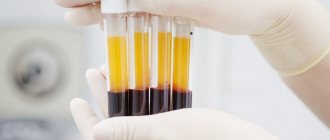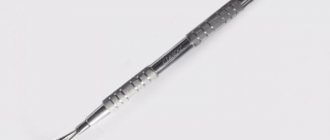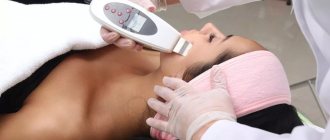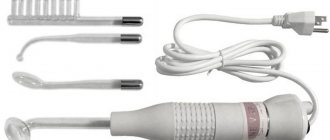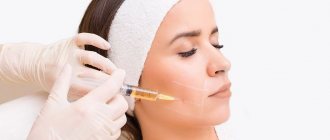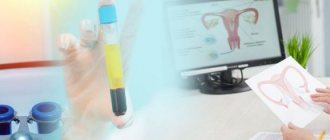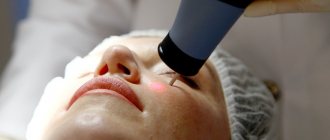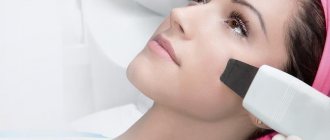Today, aesthetic medicine is experiencing its heyday, and many different techniques are available to women and men who want to prolong their youth and look great.
These are skincare procedures, hardware techniques and injections! A worthy place in this series is occupied by plasma lifting - one of the most popular procedures!
It consists of several stages, one of which is taking the patient’s blood and preparing platelet-rich plasma from it.
That is, as you understand, the beauty elixir is prepared from the patient’s own blood, which means that the risk of an allergic reaction is reduced to zero.
Let's look in a little more detail at what kind of magic this is.
What is PRP therapy?
PRP (Platelet Rich Plasma) is the platelet-rich plasma of the patient himself.
While white blood cells (leukocytes) are needed to protect the body, and red blood cells (erythrocytes) to transport oxygen, platelets are responsible for blood clotting in the event of tissue damage.
Thanks to platelets, bleeding quickly stops, which means injuries do not cause serious damage to health. In the 1980s, scientists discovered that platelets promote wound healing not only because of their ability to thicken blood, but also because they secrete specific protein compounds called growth factors. These are biologically active polypeptide molecules that activate receptors on the surface of cells. As a result, the regeneration process starts: cells divide intensively, the wound heals and tightens.
Scientific research has shown that platelet-rich plasma accelerates healing processes in various tissues. In addition, it is completely safe for the patient and absolutely biocompatible.
Doctors began to use the miraculous properties of platelet concentrate (platelet-rich plasma). Today, PRP therapy is used in various ways:
- In surgery - to improve the healing process of wounds and postoperative incisions and punctures. The use of platelet concentrate minimizes the risk of side effects such as swelling, pain, and suture infection.
- For the treatment of trophic, diabetic and other non-healing wounds - thanks to the use of platelet concentrate, it is possible to achieve significant progress in the treatment of such injuries that are difficult to respond to other types of therapy. There is evidence that you can get rid of ulcers and non-healing wounds with outpatient treatment or even at home.
- In dentistry - for the treatment of wounds after operations. PRP therapy allows you to speed up the process by two to three times.
- In sports medicine - sometimes used for accelerated treatment of muscle and tendon injuries. Scientists are still researching this technique and are looking for the most effective way to treat injuries using enriched plasma (studying the effect of injections on the skin for photodamage).
- For alopecia and baldness, platelet gel can be used to restore not only the skin, but also the hair. There are two ways to use the technique - to speed up the survival of transplanted hair or to improve the patient’s own hair when it is thinning and falling out.
- In the treatment of other diseases, doctors continue to study enriched plasma, using it to restore intervertebral discs, cartilage, heart valves, as well as to treat urological diseases.
In the last decade, platelet gel has been actively used by dermatologists and cosmetologists. The emergence of a rejuvenating technique, called plasmolifting, was a real breakthrough in this area.
How often can you do plasmolifting of the face?
Everything is very individual. The quality of plasma lifting performed and how long the effect lasts depends on many factors, such as the initial condition of the skin, its characteristics, and the natural speed of recovery.
So is there any point in the plasma lifting procedure? It is known that the effect lasts for at least one year (more precisely, from one to two years), but to consolidate it, repeated maintenance procedures are recommended - usually from four to six, depending on the doctor’s prescription.
The frequency of plasma lifting is twice a year. Before deciding to undergo this procedure, study in detail the information about facial plasma lifting, understand what effect you want to get from it and study the possible risks.
Keep in mind that the resorption time of the injected material is individual, which means that only a specialist can prescribe a repeat procedure.
Nowadays, you no longer have to spend a lot of time performing complex and unpleasant self-care procedures at home. It is much easier to seek help from real professionals - the Veronika Herba beauty and health center, equipped with effective and modern equipment.
Why clients choose Veronika Herba Beauty and Health Center:
- This is a beauty center where you can take care of yourself at a reasonable cost, while your face and/or body will be treated not by an ordinary cosmetologist, but by one of the best dermatologists in Moscow. This is a completely different, higher level of service!
- You can receive qualified help at any time convenient for you. The beauty center is open from 9:00 to 21:00, seven days a week. The main thing is to agree with your doctor in advance on the date and time of your appointment.
Sign up for a consultation with a specialist by phone +7 (495) 085-15-13
, and you will see for yourself!
What is plasma lifting?
This is a type of PRP therapy, an injection procedure that involves introducing a blood plasma-based drug into the thickness of the skin using a microneedle. This substance is rich in platelets, which contain the so-called. growth factors are compounds that stimulate the process of cell renewal.
The cosmetologist uses a drug based on human blood. The doctor prepares an injection from it and injects it into the thickness of the skin.
Important: do not confuse plasma lifting with autohemotherapy, a technique that has been used for several decades. In autohemotherapy, the patient is injected intramuscularly with his own blood to improve nonspecific immunity in the treatment of certain diseases. This procedure is carried out as part of complex therapy according to indications. Plasmolifting involves the use of only platelet-rich blood plasma and intradermal injections. This method was invented relatively recently, but quickly gained popularity.
There is nothing wrong with such manipulations, especially since blood belonging to the patient himself is used to isolate the plasma. In principle, it is never rejected by the body under any circumstances, so there are no side effects.
The drug is prepared immediately before the injection session. Using a centrifuge, the doctor extracts enriched blood plasma. Sometimes hyaluronic acid is added to it, known for its properties to moisturize and rejuvenate the epidermis.
Using a very thin needle, the drug is injected into the thickness of the skin, and platelets begin their work - stimulating metabolism and rejuvenation processes. Intradermal injections themselves promote the regeneration of the skin: the body strives to heal the inflicted microtraumas as soon as possible, and therefore the production of elastin and collagen is activated - protein compounds that give the skin firmness and elasticity.
It is no coincidence that the idea of autophagy, that is, restoration of the body using its own resources, has gained popularity. Plasma therapy eliminates side effects associated with allergic reactions to foreign elements.
Plasmolifting: reviews from doctors
Plasmolifting of the face - reviews are negative in the vast majority of cases. Positive reviews are found mainly only in patients who received plasma lifting in combination with one of the other facial rejuvenation techniques.
In the USA, the facial plasmolifting procedure is called “Vampire Facelift” or “PRP Therapy” and is often performed by doctors in combination with facial fillers, which are designed to add volume, reduce wrinkles, and remove folds. It doesn’t take much intelligence to understand that it is fillers (and not plasma) that are the source of positive reviews in this case, because fillers instantly smooth out wrinkles after being introduced into the skin, and this effect lasts from 0.5 to 1.2 years.
Plasmolifting: results of clinical studies
As for the professional view on plasma lifting, reviews from doctors almost unanimously speak of the dubious effectiveness of a separate plasma lifting procedure. Doctors refer to the lack of any scientific evidence and published reliable studies on the anti-aging effect of plasma lifting. Moreover, studies as such exist, but they are all extremely doubtful from the point of view of professionalism.
Among doctors, negative ones are most common, since doctors believe that plasma lifting is a term used as a marketing ploy to promote facial fillers in combination with the patient’s own plasma. To date, there is not a single published clinical study confirming that plasma lifting actually promotes rejuvenation and tightening of facial skin.
In 2011, a study was published on the effectiveness of platelet-rich plasma in skin rejuvenation (link to study). The study was carried out in laboratory conditions (in test tubes). It was found that plasma stimulates the function of fibroblasts and leads to an increase in their number, as well as an increase in type 1 collagen. However, this occurred not only with the administration of platelet-rich plasma, but even after the administration of platelet-poor plasma, which already raises a lot of questions.
It is striking that in this study they are generally silent about the quantitative (percentage) indicator of this increase, which gives grounds to believe that this improvement remains on the verge of statistical error. To date, there is not a single study that would be carried out in the only reliable way: taking pieces of tissue for examination before and after plasma lifting, and comparing the amount of fibroblasts and collagen in skin sections.
In this regard, there are no prerequisites for considering plasma lifting an effective rejuvenating procedure, despite active advertising and promotion of this procedure. Even the above test tube study emphasizes that there is little data to confirm the effectiveness of the use of plasma in cosmetology for facial skin rejuvenation and additional research is required.
Conclusions: today, many aesthetic clinics and beauty salons perform the facial plasma lifting procedure in combination with fillers or other anti-aging procedures. Reviews claim that the skin after the procedure really gains elasticity and radiance. However, it should be noted that fillers themselves can greatly improve the condition of aging skin.
Facial plasma lifting is just an additional procedure that does not yet have evidence of effectiveness, for which you will have to pay extra money. It turns out that the client pays for two procedures, one of which is most likely a dud, and gets an excellent result, not realizing that he would have gotten exactly the same result only after using fillers alone.
The only combination, in our opinion, that is worthy of attention is the use of enriched plasma together with a fractional type of laser. The latter creates microscopic holes in the thickness of the skin (while the surface layer of the skin is not injured), which leads to a pronounced stimulation of reparative processes in the skin. The parallel use of plasma should significantly accelerate the healing process and the formation of new collagen.
What does plasma lifting give?
The procedure has a comprehensive rejuvenating effect, combats individual defects and signs of skin aging.
Result:
- turgor improves;
- the structure of the epidermis is aligned;
- pigment spots, scars, acne marks fade, the tone becomes more even;
- wrinkles are smoothed out;
- the functioning of the sebaceous glands is normalized;
- the skin is moisturized, its nutrition improves;
- light lifting effect.
This effect on the skin has virtually no age restrictions and is suitable for people from 18 to 70 years old. It is most popular among women over 25 years of age who are fighting the first signs of aging. The effect depends on the age and initial condition of the skin. The manipulation is well suited for correcting the first signs of photo- and chronoaging: the skin is literally transformed and begins to glow with youth and health. At the age of 50+ years, the effect will no longer be so pronounced, therefore, with pronounced signs of aging, it is recommended to combine plasma lifting with other procedures.
The fundamental difference between plasma lifting and other cosmetic procedures is that exclusively the body’s own resources are used. The state of the immune, metabolic and regenerative systems improves naturally, without the use of foreign elements.
Plasmolifting: contraindications, side effects
Plasmolifting has virtually no side effects or contraindications, and is a harmless procedure. Since plasma is made from the patient's own blood, there is no risk of rejection or allergic reaction. Infectious complications are possible only if the doctor does not follow the rules of asepsis and antisepsis during blood collection, centrifugation and subsequent injection.
Plasmolifting: contraindications
- patients with cancer,
- in the presence of infections,
- patients using high doses of Coumadin,
- with Parkinson's disease, or any types of paralysis.
Side effects may include slight redness of the skin for up to 48 hours after the procedure. Sometimes small swellings (hematomas) may appear at the injection sites, which usually disappear within 10 days. Using cold compresses immediately after the procedure will minimize the risk of their occurrence.
Types of plasma lifting
- Plasmolifting of the face, neck and décolleté. Improves skin condition, eliminates stagnant, age spots.
- Intimate PRP therapy. In this case, an injection of platelet concentrate is used to correct signs of aging in the vaginal area and labia. The technique is usually used in combination with other types of treatment; it is effective against atrophic changes and lipodystrophy, and tissue aging.
- Plasmolifting of the scalp (or, as it is not entirely correctly called, plasmolifting of the hair). In this case, the drug is injected into the scalp to stimulate hair growth, improve its nutrition, and therefore its appearance. The technique is used for alopecia – pathological hair loss, which leads to the complete disappearance of hair in limited areas.
The most popular anti-aging effects are on the face, neck and décolleté. These areas are most susceptible to photoaging, and plasma therapy can significantly improve their condition.
Hair after PRP therapy becomes silky, strong, elastic and shiny due to improved nutrition. The growth of new hair is activated, the work of the sebaceous glands on the head is regulated, itching and dandruff disappear. The effect is usually achieved after several sessions and lasts for a long time.
Indications and contraindications
The anti-aging procedure has its own indications and contraindications, which must be taken into account before deciding to undergo it.
The first age-related changes appear on the skin after reaching 30 years of age. During this period, you can notice the appearance of the first wrinkles, a decrease in skin elasticity, and loss of clarity of the oval of the face. The presence of these signs indicates that it is time to visit a cosmetologist. In some cases, the procedure is prescribed at a younger age, for example, if the patient has severe acne.
Acne problems usually begin during puberty and can persist for a long period of time.
Skin problems are not the only indication for plasma lifting. So, if the patient has severe dry skin in the neck and décolleté, decreased elasticity of the skin on the arms, thighs, abdomen, sparse and weakened hair, plasma lifting is indicated in these cases as well.
Damage to the skin during unsuccessful hardware procedures.
After the rejuvenating procedure, you are allowed to use the face cream as before (i.e. morning and evening).
The main contraindications to the cosmetic procedure include:
- liver diseases (hepatitis, cirrhosis, failure);
- malignant neoplasms;
- pathologies of the cardiovascular system, sepsis, anemia;
- endocrine diseases (for example, diabetes);
- infectious diseases of internal organs in acute and chronic form;
- intoxication of the body;
- period of pregnancy and breastfeeding;
- The presence of inflammation, irritation and rash on the skin;
- tendency to allergic reactions to various substances.
In general, if you have any health problems, even if it’s a common cold, it’s best to hold off on undergoing plasma lifting. First, it is necessary to eliminate the disease, and then begin cosmetic procedures.
If there are contraindications, you should postpone the rejuvenating procedure, since otherwise the effect can be very unpleasant, and the recovery period can be longer.
Indications
- Prevention of aging . In childhood, tissues are renewed quickly, but over time this process slows down. Plasma therapy allows you to prolong youth and prevent the appearance of such unpleasant phenomena as wrinkles, excessive dryness, and lack of elasticity.
- Age-related changes . Wrinkles, enlarged pores, sagging, pigmentation, dull complexion - all these problems can be eliminated with the help of microinjections of your own plasma. Under the influence of platelet-derived growth factors, skin regeneration processes are launched and signs of aging are erased. Of course, it will not be possible to turn back time, but plasma therapy can eliminate unpleasant symptoms and restore youthful freshness and beauty to the face.
- Scars and scars . Plasmolifting stimulates skin renewal and improves blood circulation in the treated area - what is needed to get rid of scars and scars. The defects gradually resolve, becoming almost invisible.
- Acne . The procedure is recommended in the stage of remission of the disease, when there are no more than a couple of pustules on the skin. The effect regulates the activity of the sebaceous glands, which, in turn, helps prevent the occurrence of new rashes.
- Post-acne . Acne causes a lot of trouble for its owners even after the acne disappears. Where there used to be inflamed acne, scars and stagnant spots remain. PRP therapy effectively combats them. Skin cells are actively renewed, spots disappear, and the relief is evened out.
- Rehabilitation after traumatic cosmetic procedures . Some procedures involve damage to the skin. Such measures have a mobilizing effect on the epidermal cells, stimulating the production of compounds for the speedy restoration and renewal of the skin. The effect can be good, but rehabilitation sometimes takes a couple of weeks, or even more. To help the skin recover, PRP therapy is used. Thanks to her, the rehabilitation process is accelerated.
- Hair loss, poor condition . Plasmolifting has also proven itself in hair restoration. The procedure improves blood circulation in the scalp, and subsequently the nutrition of the hair follicles improves. The growth factors contained in plasma rejuvenate the skin and improve its condition.
Plasma therapy can be used in other cases - in addition to other procedures or independently. At your appointment, the cosmetologist will assess how appropriate it is to use the therapy in your case, and what effect can be achieved this way.
Advantages and disadvantages of the plasma lifting procedure
The most important advantage of the procedure is the effect of rejuvenation of the face (or other part of the body); In addition, it can help get rid of baldness. The technique launches natural skin regeneration processes using “native” components - namely the patient’s blood plasma; it turns out that no foreign elements are involved in the process. That is why, with proper plasma lifting, any complications of an immune, allergic or other nature are practically absent.
"Against":
- In any case, microinjections are a medical intervention.
- If tubes and other equipment are reused, there is a risk of infection with serum infections, such as viral hepatitis.
- Activation of “dormant” infections (autoinfection). For example, if a person is a carrier of a virus, for example, herpes, which does not manifest itself in any way, but when plasma lifting is carried out, the virus awakens, as its habitat changes.
Read material on the topic: Facial mesotherapy procedure: pros and cons
Contraindications
Contraindications are standard for injection procedures.
This:
- Pregnancy and lactation.
- Any acute or aggravated chronic diseases.
- Dermatological diseases.
- Inflammatory process in the treatment area.
- Malignant neoplasms (not only at the site of exposure, but also in the body as a whole).
- Immunosuppressive conditions.
- Mental illnesses and epilepsy.
- Tendency to form keloid scars.
- Blood clotting disorders.
- Taking medications that affect blood clotting. Anti- and procoagulants should be stopped taken at least a couple of weeks before visiting the clinic - of course, with the permission of the attending physician who prescribed the drugs.
In itself, its own plasma is harmless to the body, so restrictions are associated mainly with the method of its administration - microinjections.
Why Latum Clinic?
“Latum Clinic” is a team of true professionals who are focused on a common result.
Advantages of Latum Clinic:
- Wide range of services. The clinic operates in several areas - children's and adult departments, pregnancy management, diagnostics, cosmetology, doctors visiting the address, etc.
- Acceptable pricing policy. The price of plasmolifting for the face in Moscow is quite affordable - for an initial consultation you can contact a cosmetologist and get all the necessary information about the procedure (price, preparation, additional measures, rehabilitation, etc.).
- High level of service. Patients and clients of the clinic do not experience any discomfort from their stay at the Latum Clinic, and our employees always behave politely and decently with patients.
The professionalism of doctors, specialists, and diagnosticians is confirmed by numerous positive reviews from patients, which can be found on the official website of the clinic.
Preparation for plasma lifting
There is no need for complicated preparation. For two weeks before the procedure, it is recommended to avoid the sun and not visit the solarium. In addition, you will have to stop taking medications that increase or decrease blood clotting.
It is not recommended to plan the procedure on critical days, since at this time clotting rates decrease. Also, you should not do plasma lifting immediately after an illness or surgery - at this time the immune system is reduced and the effectiveness of the procedure may decrease.
On the day of the procedure and the day before, you should give up alcohol and cigarettes - bad habits negatively affect the quality of plasma, although they do not completely negate the benefits of the procedure.
It is recommended to carry out plasma therapy on an empty stomach; you should not overeat the day before. But on the contrary, you should drink more water.
conclusions
- Plasmolifting is a popular and effective procedure due to its naturalness and naturalness. It is based on the use of blood plasma injected under the patient’s skin layer using injections.
- Rehabilitation and recovery occur extremely rarely, and results are visible within a week.
- Before use, you should take tests, consult a doctor and study contraindications.
- Allows you to get quick results and rejuvenate yourself without resorting to surgery.
How is the plasma rejuvenation procedure performed?
One session lasts on average about 40-60 minutes. First, the doctor takes blood from a vein - about 10-50 ml is required for one procedure. This manipulation must be repeated before each session, since only fresh plasma can be used: it cannot be stored and quickly loses its beneficial properties due to the death of platelets.
The next stage is plasma isolation. For this, the doctor uses a special centrifuge. The equipment must be certified. Using a centrifuge, blood is processed at a given speed for no more than 6 minutes.
Plasmolifting
During the procedure, sterile equipment and disposable materials are used, and the skin is treated with an antiseptic before and after injections. Thus, there is no risk of infection in the wounds.
The isolated plasma is a yellowish liquid, it is used alone or in a mixture with hyaluronic acid, which has the ability to attract moisture, thus moisturizing all layers of the skin. The doctor makes injections with a thin needle, saturating exactly those areas that need it with platelet gel. It penetrates no more than 1 mm, filling the skin with a plasma-based drug.
At the end of the treatment, the doctor wipes the treatment area with an antiseptic solution and applies a soothing gel to the face.
Since the procedure is invasive, i.e. involves a violation of the integrity of the skin, it should be carried out in a licensed clinic in which all necessary sanitary requirements are met. The procedure must be performed by a certified dermatovenerologist-cosmetologist. An attentive, neat doctor and modern equipment are the main components of success.
How to carry out the procedure
Plasmolifting is a cosmetic procedure that is carried out in several stages:
- Self-preparation of the patient at home.
- Blood is collected and prepared in a special centrifuge (during such preparation, plasma is released, which is then enriched with platelet mass).
- Injection of the resulting substance into certain areas of the skin on the face (depending on the problems detected).
The most important stage of plasma lifting is the preparatory stage, which in no case should be neglected. After all, the final result will largely depend on how carefully the patient followed all the rules of this stage.
So, a few days before the procedure you need to adjust your diet. You will have to exclude fatty, fried, salty, and spicy foods from your daily menu. In addition, it is important to stop drinking alcohol (the components that make up alcohol negatively affect the quality of the blood, changing its composition).
It is important to establish a drinking regime. You need to drink at least 2 liters of clean liquid (namely water, not any other drinks) per day.
The plasma lifting procedure is recommended to be prescribed in the morning.
Daily facial skin care before the procedure remains the same. However, a few days before plasma lifting, it is recommended to avoid aggressive cleansing, masks, and deep peeling.
Progress of the procedure
Plasmolifting is carried out exclusively in a cosmetology clinic, since special equipment and qualified personnel are required to correctly perform all manipulations.
At the initial stage, the patient’s venous blood is collected (the procedure is similar to taking a regular blood test from a vein). After this, it is placed in a centrifuge, where plasma is separated.
The patient's facial skin is treated with an antiseptic solution. This is necessary in order to prevent the risk of infection during the procedure. Although the technique itself is minimally invasive, there is still minor damage to the skin and soft tissue. Bacteria can easily enter the body through wounds.
Next comes the injection stage itself. Their number, as well as their location, may vary. The procedure is quite painful and lasts about half an hour. After this, the patient needs a short rest, then he can go home.
Recommendations for the procedure
It is necessary to follow certain rules that will make the plasma lifting procedure most effective:
- Blood sampling must be done on an empty stomach.
- On the eve of the procedure, you should not overeat; it is best to eat easy-to-digest foods for dinner, or skip dinner altogether.
- After the procedure, the patient will need some time to recover (3-5 days). During the rehabilitation period, the skin should be protected as much as possible from sunlight and exposure to extreme temperatures.
- Throughout the entire recovery stage, it is necessary to refrain from using decorative cosmetics.
- The procedure must be repeated every 2 weeks (up to 5-6 procedures will be required in total).
Need maximum effect? What procedures can PRP therapy be combined with?
An important advantage of plasmolifting is the possibility of its combination with other anti-aging manipulations . Moreover, after traumatic procedures, plasma lifting is recommended - this is an excellent opportunity to speed up the restoration of the epidermis or help the skin cope with the stress it has experienced. For example, mini-plasma injections are recommended after chemical peels and carbon peels .
Another successful solution is a combination with thermolifting. Rejuvenation with radio waves tightens tissue, and the subsequent injection of plasma improves the condition of the skin and makes it more elastic. The frequency of sessions and their number are determined individually by the cosmetologist.
Excellent results are obtained by alternating plasma therapy with laser rejuvenation. This approach avoids the skin becoming accustomed to certain types of exposure and enhances the effectiveness of both.
Pros and cons of plasma lifting of facial skin
The benefits of manipulation include: epidermal cells receive a sufficient amount of oxygen, the antioxidant system is stimulated, stem cell growth is activated, the immune system is strengthened, the overall color of the skin is evened out, wrinkles and acne are eliminated.
Disadvantages of the therapy method: the patient feels discomfort and unpleasant sensations during the manipulation, there is a risk of infection, the effectiveness of the procedure cannot be seen immediately, but after 1.5-2 weeks. Other disadvantages of facial plasmolifting include its high cost and the fact that an invasive microscopic intervention is performed by a specialist.
Rehabilitation and care after plasma lifting
Immediately after the procedure, marks from injections and redness are visible on the face. Partially, these manifestations disappear within 24 hours, especially if you carefully care for your face and do not use decorative cosmetics. For a month after the procedure, you need to protect your skin from the sun, do not visit the solarium, sauna, bathhouse, do not take hot baths and avoid drinking alcohol. You should also refrain from massage in the affected area.
Plasma injections promote rapid skin restoration, so there is no need for any special complex care. It is enough to protect your face from the sun for a couple of weeks and do not forget about cleansing, moisturizing and nourishing.
Methodology for plasma lifting
The plasma lifting procedure consists of several stages; it can only be carried out by a clinic that has the appropriate permit to work with blood:
Stage 1. First of all, the face is disinfected, all contaminants are removed with a special product and wiped with chlorhexidine. Next, a thin layer of an anesthetic substance (cream or gel) is applied to the skin. The face is covered with film for a while so that the effect of anesthesia is longer and more reliable.
Stage 2. Collection of 20 to 40 ml of the client’s venous blood and its transfer into specially treated tubes.
Stage 3. The blood is placed in a specialized apparatus (medical centrifuge), where it is processed for 10 minutes. Upon completion, plasma with a large volume of platelets necessary for administration is released from the liquid. It is a loose, translucent yellowish liquid that is easily injected under the skin.
Stage 4. Blood plasma is placed in a sterile syringe, using which a specialist injects the face according to a certain pattern. Her choice depends on the type of skin problem. During the session, the needle is replaced to reduce the patient’s discomfort. After completing the procedure, the surface of the face is treated with saline solution, dried with napkins, then a soothing gel or Traumeel S is applied.
The duration of the procedure is approximately one hour. After this, the face swells a little, but in general you can safely go out “into society” without decorative cosmetics, since its use is temporarily prohibited. What effect you get from plasma lifting will largely depend on how seriously you take the restoration of your skin after surgery.
Read material on the topic: How to remove wrinkles on the face: the most effective methods
